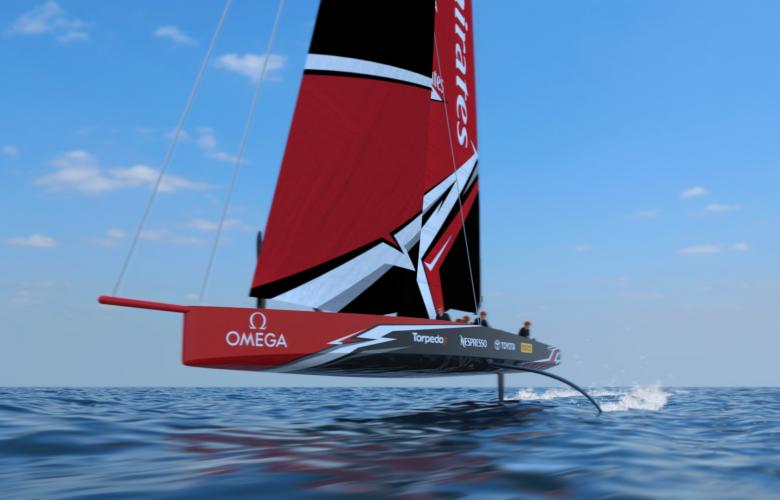Kiwi tourism and increase in superyacht numbers set to deliver strong returns in 2021
Contact
Kiwi tourism and increase in superyacht numbers set to deliver strong returns in 2021
The growing size of the global superyacht fleet and New Zealand’s rising popularity as a tourism destination is set to mean the 36th America’s Cup in 2021 will be the biggest yet for Auckland, according to a new report by CBRE.
The CBRE report highlights that the America’s Cup injected an additional $432 million and $497 million of expenditure into the Auckland economy as a result of the 2000 and 2003 regattas respectively.
Racing syndicates and their families together represented the largest source of expenditure (around 55%), totalling $224 million, and superyachts accounted for just over $150 million. Other sources of spend included international visitors, domestic visitors, media and regatta organisers.
In addition to direct spending, the report notes the broader peripheral impact of the previous two regattas on the development of Auckland’s waterfront, with 52% of apartments built in the Viaduct and Princess Wharf being completed in 1999 and 2000, with a second wave of apartments completed from 2004-2007, following the 31st America’s Cup.
Zoltan Moricz, Head of Research at CBRE New Zealand, says while it’s unlikely that Auckland hosting the 36th America’s Cup will have the same catalytic urban regeneration effect the previous two events had, there is no doubt about the positive economic impact to come from it.
“While the scale of the 2021 event will likely be reduced in terms of number of syndicates competing compared to 2000 and 2003, growth of the superyacht sector and the maturity and diversity of our tourism offer since then should offset this through greater levels of visitor activity and spending.
“The distribution will be felt across accommodation and hospitality, retail, and the marine industries and a forecast economic impact detailed in a report prepared for MBIE of between $555 and $977 million for the 2021 America’s Cup is looking likely.
From October 2002 to March 2003, during the height of the 31st regatta, an estimated 104 superyachts (vessels typically greater than 25 metres in length) visited Waitemata Harbour, staying on average 118 days.
With superyachts spending $73 million from 2000 to 2003 in the marine sector and generating over half of total retail spending that occurred in Auckland during 2003 regatta, Moricz says the vessels are a notable spectacle of the America’s Cup, often traveling en masse, making long journeys to host cities and typically staying for extended periods.
“With the number of superyachts globally steadily increasing since previous Auckland regattas (by 2021 forecasts due to approach 6,000 vessels; approximately twice the number in 2000) as well as their average larger size (up from 35-40 metres to about 55 metres) it would be reasonable to expect a lift in their impact for the 2021 Cup.”
Prior to the 2000 America’s Cup, the average room rate and the occupancy rate for Auckland hotels were trending downwards but were both revived with the start of the Louis Vuitton Challenger Series in September 1999 and room rate remained lifted from September to March during the height of both the 2000 and 2003 regattas.
Peter Hamilton, Director of Hotels and Leisure at CBRE New Zealand says the market has shifted and grown significantly since then and for the 2021 America’s Cup regatta the issue will be less around occupancy and room rates and more around supply.
“Based on the current pipeline of hotels planned in Auckland, there are currently an additional 3,195 hotel rooms planned to be built in time for the 36th America’s Cup of which 1,079 are currently under construction and probability forecasts suggest an additional 2,580 rooms (81% of the total) will actually be constructed.
“On this basis demand is likely to exceed supply during peak times however it’s still felt the current pipeline of hotel stock should be sufficient to cater with some additional capacity required during these periods. We would expect the residential apartment market to provide the additional capacity through the likes of Airbnb.”
For the last America’s Cup held in Auckland in 2003, the report notes the regatta brought an estimated $136 million of additional direct spending into the local retail economy. For 2021, the CBRE report forecasts $142 million in direct retail spending in a low scenario up to $253 million on a high scenario with a base scenario of $197 million.
According to Tim Male, National Director Retail, Advisory and Transaction Services for CBRE New Zealand the additional spend will mainly support existing outlets however the high-profile nature of the regatta and global media coverage will ensure interest from further afield for brand exposure and positioning purposes.
“Since the syndicate bases are likely to be dispersed in Wynyard Quarter and Viaduct Harbour, the nucleus of foot traffic will not be concentrated near any current retail offering and as such, some new brands are likely to establish a presence through the likes of pop up stores.
“While we don’t expect this to result in long term leases of retail space in these locations, if there are suitable opportunities these retailers may establish a permanent presence in the more traditional CBD retail core.”
With syndicate sizes estimated between 560 and 930 members, and adding in family and support crew, up to 900 residential dwellings are expected to be needed for the next America’s Cup with a likely preference for the Wynyard and Viaduct areas.
Already starting from a constrained supply side, with just 1,012 residential units built between 2014 and 2016 in the city centre to meet an additional 10,000 residents in the area over that period, has led to increased residential densities and virtually no rental vacancy in the market.
With undersupply expected to continue with projected population growth running ahead of forecasted supply to 2020, Zoltan Moricz says the ability to accommodate syndicates is further compounded by capital constraints and construction capacity in the current development market.
“Under this scenario, increased pressure will be placed on the commercial accommodation market, especially the serviced apartment sector where units are more suitable for longer term stays. In addition, we suspect that some of the existing owner occupier apartments will be made available for shorter term rentals and that Airbnb style accommodation will be subject to significant demand pressure from both visitors and the sailing community.”
Click here to download the full report by CBRE.
To discuss the New Zealand hotel market in further detail phone or email Peter Hamilton or Zoltan Moricz of CBRE via the below contact details.
See also:
Savills release their Feb 2018 Hotels Market Report







